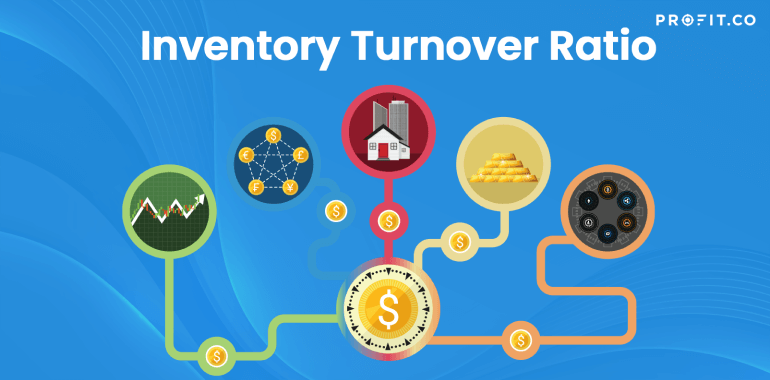Now we’ll look into the efficiency ratio that is the inventory turnover ratio. This ratio is used to determine whether the inventory of a business is managed in an efficient manner or not.
When calculating the inventory turnover ratio, we compare the cost of goods sold with the average inventory, for a certain period of time. The result will show us how many times on average is the inventory sold, or turned, during a period.
In short, this ratio rounds up the times a company has managed to sell its average inventory during a year when compared to the dollar amount of the average inventory.
The Inventory Turnover Ratio – What You Need to Know
Let’s begin with an example – if we have a company that has an average inventory that’s worth $1000 and, by the end of the year, it manages to have a profit of $10,000, it means that the company has sold its inventory 10 times over.
The inventory turnover ratio is very important when we want to determine a certain company’s performance, as the ratio itself depends on two components of the latter.
First of all, we have stock purchasing – for example, we have a company that buys a large amount of inventory. This can only mean two things: it is either going to increase its turnover by selling more of their inventory, or the company will face storage or holding costs if it can’t sell a significant amount of its inventory.
It’s a double-edged sword, as a company has to be sure that it can see any amounts of inventory it purchases. Therefore, the second main component of performance is sales. As mentioned, a company has to sell as much inventory as it has, or else its inventory won’t effectively turn.
Therefore, the sales and purchasing departments of a company/ business must always know what the other is doing.
The Formula of Inventory Turnover Ratio
In order to round up the inventory turnover ratio, we have to divide the costs of goods sold, for a period of our choice, by the average inventory for the period we have chosen.
You might wonder why the equation doesn’t use ending inventory. Well, it is because a company’s inventory tends to fluctuate throughout the year, therefore the result of the equation won’t be entirely correct.
In order to calculate the average inventory, you have to add the beginning and ending inventory together and then divide the result by two.
Conclusion
As this ratio determines the company’s effectiveness when controlling its merchandise/ products, it is better and even recommended that the inventory turnover ratio is high – obviously.
A higher ratio means that a company knows how to spend its funds and how much to buy and doesn’t waste any of its resources. After all, inventory that is not sold will remain in the stock, and the company is still going to pay for its storage.
Moreover, a high ratio also means that a company has a very liquid inventory. The inventory turnover ratio basically shows how fast and how easy a company can turn its average inventory into cash – profit!
